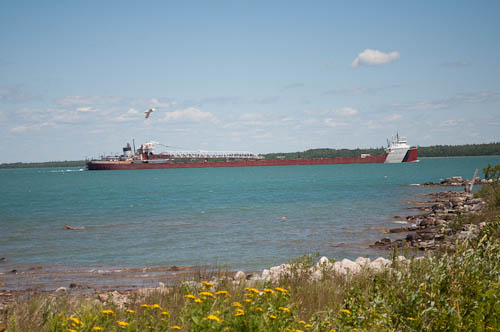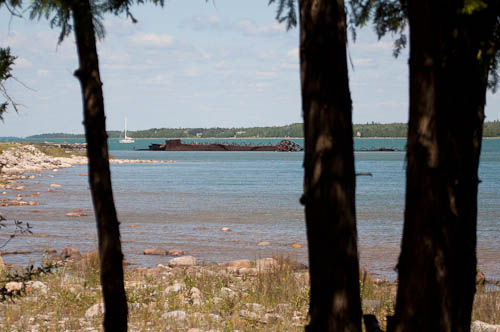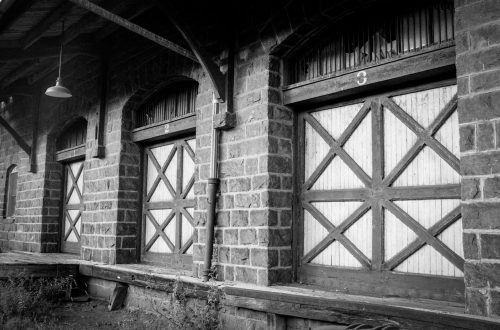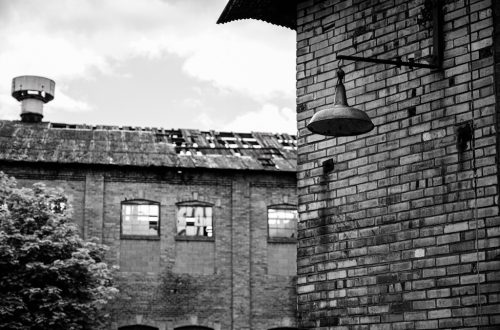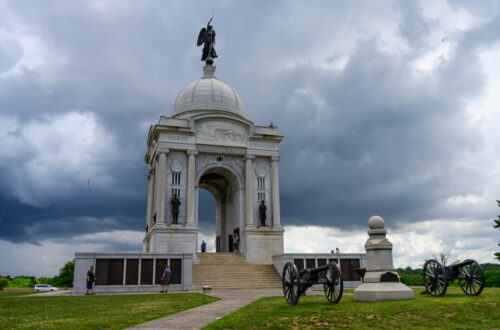Beyond the Gitche Gumee
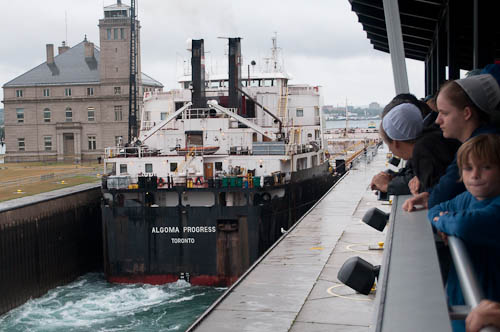
I learned something new today on Wikipedia. I learned that Lake Superior is not actually the largest of the Great Lakes. Actually, the privilege should go to Lake Michigan-Huron, which geographically is one giant lake.
I find this fascinating for several reasons. My sisters and I grew up listing to Gordon Lightfoot’s “The Wreck of the Edmund Fitzgerald“ which references Lake Superior as the Gitchee Gumee, or Big Water. Since we lived in the southernmost part of Pennsylvania, it was a big deal for us to cross the state to go visit Lake Erie, and an even bigger deal to visit Niagara Falls and camp next to Lake Ontario.
When I met Jonathan, I learned that his parents once lived in St. Ignace, MI, on the Northeast shore of the Staits of Mackinac. (The Straits connect Lake Michigan with Lake Huron.) I have now been on six trips to the Upper Peninsula of Michigan (the U.P.) with Jonathan’s family. I sometimes sit on the shore of the Straits and wonder where, technically, Lake Michigan ends and Lake Huron begins. Now I realize that it doesn’t matter, since it is all the same lake. According to the Royal Canadian Geographical Society as quoted in the first Wikipedia entry linked above, “Lakes Huron and Michigan lie at the same elevation, 577 feet (176 m), rise and fall together, and the flow of water between them at times reverses from eastward to westward.”
I titled this entry the way I did because we spent much time on our recent trip watching boats move around among the lakes. At the beginning of the week, we spend a day sitting along the Straits of Mackinac watching sailboats on a race from Chicago finish their trips through Lake Michigan, as they moved through the Straits into Lake Huron, headed to Mackinac Island. A few days later we sat along the De Tour passage waiting for freighters that had left Lake Superior and were now navigating the passage to the deep waters of the open lake of Huron. Here is one ship that we waited for over an hour to watch:
On a darker note, we later saw some of the passage’s shipwreck remains when we walked through the De Tour Botanical Gardens:
The picture at the very beginning of my blog entry was taken towards the end of our trip, when we made our usual visit to visit the Soo Locks in Sault Ste. Marie. The locks provide a way for boat traffic to bypass the rapids on the St. Mary’s River as they traverse between Lake Superior and Lake Huron. Here is the official U.S. Army Corps of Engineers website for the locks. They are operated by the Corps of Engineers, and there is no admission fee to view the locks from a covered two-story platform. (This is the platform from which I shot the first photo in this blog entry.) This section of the website lists a Boatwatcher’s Hotline phone number that you can call a few hours before a trip to the Soo Locks to find out how much boat traffic is supposed to go through the locks during your visit. If you intend to visit the locks but have some flexibility in the time of your visit, I recommend calling the number. In 2010, we took my parents and two of my sisters to the locks, and only one freighter came through the day of our visit. We actually missed seeing it go through the locks, but were able to watch it travel the St. Mary’s River, past Sugar Island.
Of course, during every trip to Sault Ste. Marie, I look at the water and wonder where the Gitchi Gumee technically ends.
